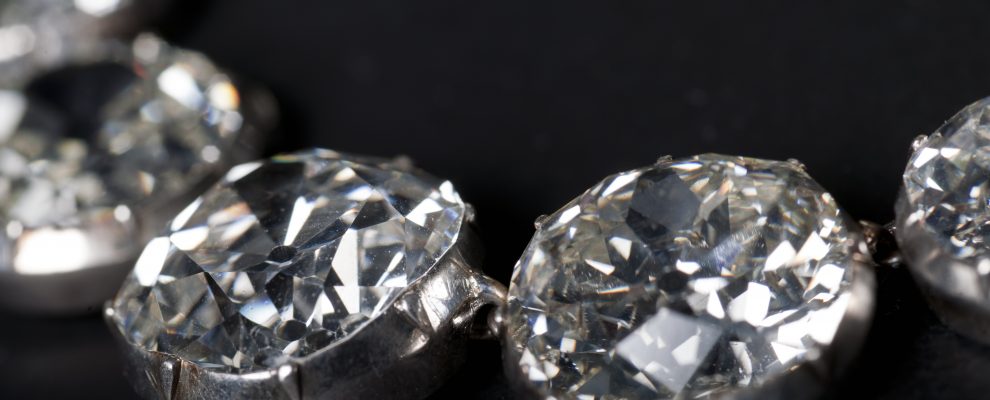The diamond was the premier gem of the eighteenth century: symbolising status, wealth and privilege, the ultimate fashion accessory and jewel of choice of the Georgian age.
During the seventeenth century perceptions of how a diamond should look had changed, inspiring the creation of a new sparkling cut – the ‘brilliant’. With its multiple facets more efficiently reflecting and refracting light, brilliant-cut diamonds sparkled like no others and quickly came to dominate jewellery design. Magnificent sets of diamond jewels, with the stones often mounted in silver to enhance their brightness, became essential personal adornments in both court life and polite society.
Whilst daytime diamond wear was becoming permissible, the finest jewels were still reserved for the evening, when candle light brought out the sparkle and fire of the stones. The largest jewels were worn on the bodice in the form of a stomacher brooch, while smaller ornaments could be scattered over an outfit. Flowers and bows were popular patterns, and the ‘parure’, a set of various matching items of jewellery with a magnificent necklace as the centrepiece, represented the forefront of fashion.
By the second half of the eighteenth century the availability of diamonds was increasing, leading to them losing some of the exclusivity with which they were formerly viewed by the nobility. In the 1720s, just as the Indian diamond mines which had supplied the European market were becoming exhausted, a new source was discovered in Brazil and named after its crystalline riches: Diamantina. The steady development of such new diamond-producing areas and the constant prospecting for undiscovered deposits produced an unprecedented increase in the world availability of diamonds. As a result rough diamond prices fell and ‘brilliants’ became affordable for a much larger – although still wealthy – section of society, eager to exploit the high status and aspirational qualities of diamond jewellery.
As a family moving in polite society both in London and York the Fairfaxes possessed a suite of ‘brilliants’ suitable to their status as members of Georgian elite society. A document by Frederick Kandler, one of the most prestigious goldsmiths of the period, gives a glimpse of some of the diamond jewels that Anne Fairfax may have had at her disposal, including a stomacher brooch and sets of hair ornaments, earrings and necklaces.
However, little diamond jewellery survives in its original form from this period. As new cutting techniques emerged, and jewellery styles changed, the high intrinsic worth of Georgian diamonds saw many of them remodeled and reset into more fashionable designs – or even sold, to raise much needed money for family estates.

Name: Hannah Phillip
Title: Director
Source: Crowning Glory (Fairfax House, 2013)
